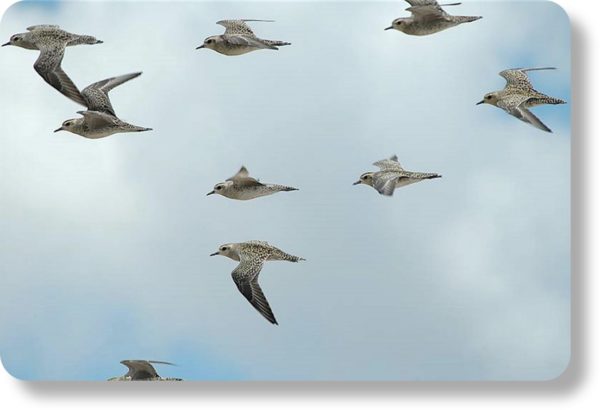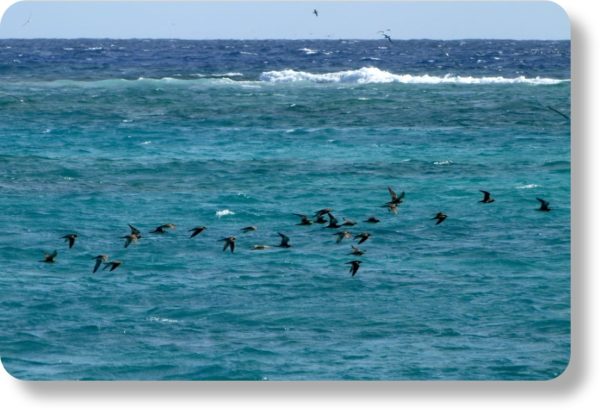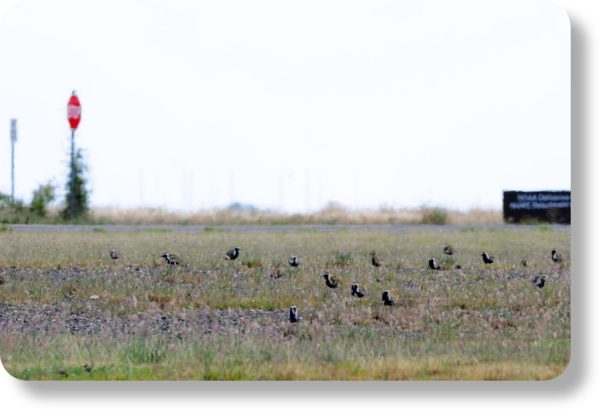Pacific Golden-Plover in Hawaii

An Island Favorite
With the Kolea’s striking beauty, remarkable migrations, and pattern of returning to the same spot each year, Hawaii’s residents and visitors have deep affection for the birds.
Ceramic artist Megan Mant created this Kolea mosaic in 2013. The artwork is a permanent fixture on the corner of Uluoa Street and Kailua Road (Pali Highway) in Kailua, Oahu.

An Island Favorite
With the Kolea’s striking beauty, remarkable migrations, and pattern of returning to the same spot each year, Hawaii’s residents and visitors have deep affection for the birds.
Ceramic artist Megan Mant created this Kolea mosaic in 2013. The artwork is a permanent fixture on the corner of Uluoa Street and Kailua Road (Pali Highway) in Kailua, Oahu.
Migration
Based on tracking studies of plovers tagged with tiny recording devices:
Distance between Hawaii and Alaska: About 3,000 miles
Nonstop flight time to Alaska 3 days, or about 72 hours over the Pacific Ocean
Nonstop flight time to Hawaii 4 days, or about 96 hours over the Pacific Ocean
*The one-day time difference between flying north and flying south may have been due to adverse winds


Migration
Based on tracking studies of plovers tagged with tiny recording devices:
Distance between Hawaii and Alaska: About 3,000 miles
Nonstop flight time to Alaska 3 days, or about 72 hours over the Pacific Ocean
Nonstop flight time to Hawaii 4 days, or about 96 hours over the Pacific Ocean
*The one-day time difference between flying north and flying south may have been due to adverse winds

Arrival in Hawaii
Females arrive: late July to early August
Males arrive: mid-to-late August
Summer offspring arrive: October-November

Arrival in Hawaii
Females arrive: late July to early August
Males arrive: mid-to-late August
Summer offspring arrive: October-November
Hawaii Departure
Kolea leave Hawaii in late April or early May. The birds’ biological clock probably determines when they depart and the clock is probably set on the breeding grounds before they return to Hawaii.
Kualoa Regional Park on Oahu is a good place to see a flock gathering to depart.
(Right) A pre-migratory gathering in April at Ford Island, off limits to nonmilitary people.


Hawaii Departure
Kolea leave Hawaii in late April or early May. The birds’ biological clock probably determines when they depart and the clock is probably set on the breeding grounds before they return to Hawaii.
Kualoa Regional Park on Oahu is a good place to see a flock gathering to depart.
(Right) A pre-migratory gathering in April at Ford Island, off limits to nonmilitary people.

Gender
In winter, males and females look alike (left photo).
Because the birds begin shedding their breeding-colored feathers while still in Alaska, it’s often impossible to tell whether a returning bird is male or female.
Starting around February, the birds begin molting their drab winter feathers and begin growing bright breeding plumage.
An April male (left); female (right.)

Gender
In winter, males and females look alike (left photo).
Because the birds begin shedding their breeding-colored feathers while still in Alaska, it’s often impossible to tell whether a returning bird is male or female.
Starting around February, the birds begin molting their drab winter feathers and begin growing bright breeding plumage.
An April male (left); female (right.)
Life Span
The only way we know a bird’s age for certain is by placing leg bands on it as a chick. After that, age is usually unknown. All bird band numbers and band colors are recorded at the USGS Banding Laboratory in Patuxent, Maryland.
Right: The oldest recorded Kolea, banded at Bellows Air Force Base, lived at least 21 years, 3 months. Because no one knew how old the bird was when banded, it may have been older.


Life Span
The only way we know a bird’s age for certain is by placing leg bands on it as a chick. After that, age is usually unknown. All bird band numbers and band colors are recorded at the USGS Banding Laboratory in Patuxent, Maryland.
Right: The oldest recorded Kolea, banded at Bellows Air Force Base, lived at least 21 years, 3 months. Because no one knew how old the bird was when banded, it may have been older.

Night Time
Kolea gather at dusk on rooftops to spend the night.
Kolea settling at dusk on Longs Drugs roof, Ala Moana Center.
A rooftop gathering at dusk in Waimanalo.

